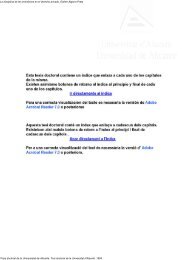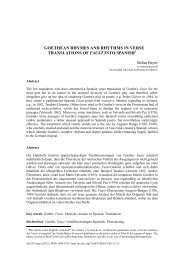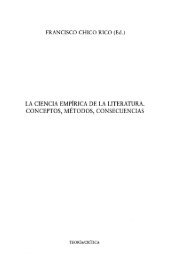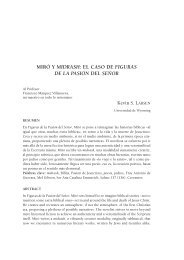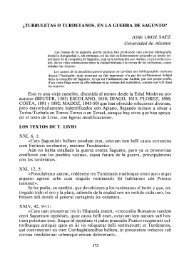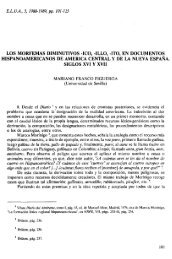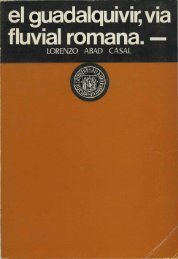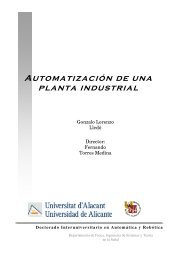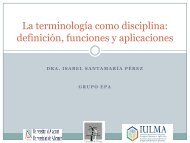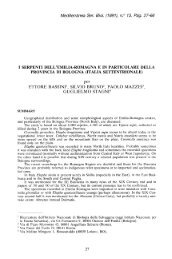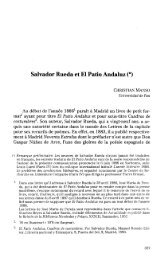ecological effects of marine protected areas empafish project ...
ecological effects of marine protected areas empafish project ...
ecological effects of marine protected areas empafish project ...
Create successful ePaper yourself
Turn your PDF publications into a flip-book with our unique Google optimized e-Paper software.
EMPAFISH Booklet no. 1 Ecological <strong>effects</strong> <strong>of</strong> Atlanto-Mediterranean MPAs in the EU<br />
20<br />
o Benthic communities<br />
First works, conducted even prior to the inauguration <strong>of</strong> protection measures,<br />
were devoted to study the biology, ecology and distribution <strong>of</strong> some benthic<br />
taxa and describe the spatial distribution <strong>of</strong> benthic species (Ramos 1985;<br />
Sánchez Jerez et al. 1994; Romero & Sánchez Lizaso 1999), especially on<br />
Posidonia oceanica beds (Romero et al. 1998; Mateo 2003). Recently, some<br />
studies have been carried out on the distribution and abundance <strong>of</strong> Pinna<br />
nobilis (Sánchez Jerez et al. 2003), Dendropoma petraeum (Bayle et al. 2004)<br />
and echinoderms (Sanchez Jerez et al. 2005).<br />
� Reserve effect<br />
o Management <strong>of</strong> MPA<br />
Some data were provided on the successfulness <strong>of</strong> the management and<br />
zoning <strong>of</strong> the TIMR (Ramos et al. 1990a, 1990b, 1990c, 1992a, 1992b). The<br />
management plan and zoning <strong>of</strong> TIMR were suitable to organize the human<br />
activities carried out around Tabarca Island, favouring a compatible socioeconomic<br />
development <strong>of</strong> the local community. TIMR were included too as a<br />
case study in a review on the importance <strong>of</strong> cultural and socio-economic<br />
factors to assess the successfulness <strong>of</strong> an MPA (Badalamenti et al. 2000;<br />
Sánchez Lizaso et al. 2002) and the fishery sector (Sanchez Lizaso & Giner<br />
2001).<br />
o Fish assemblage<br />
Descriptive data were provided some years after protection (Ramos & Bayle<br />
1990, 1992) and about the indicator value <strong>of</strong> fish assemblage to assess the<br />
<strong>effects</strong> <strong>of</strong> protection (Bayle & Ramos 1993). UVC monitoring program show<br />
how TIMR harbours a very rich and diverse fish assemblage as compared to<br />
un<strong>protected</strong> <strong>areas</strong>, indicating that management measures have been<br />
adequate to protect a number <strong>of</strong> <strong>ecological</strong>ly as well as commercially<br />
important species (Bayle 2002; Forcada 2004). Fish families responding the<br />
best to protection measures –by having higher abundance and/or biomass<br />
within the MPA, are serranid (groupers and combers) and sparid (sea-breams)<br />
species. Some fish species were more abundant and/or big in size in <strong>protected</strong><br />
<strong>areas</strong> than in control sites. A meta-analytical approach were used to assess<br />
the <strong>effects</strong> <strong>of</strong> protection <strong>of</strong> fishes integrating data from different studies<br />
(Ojeda-Martínez 2004), showing the importance <strong>of</strong> implementing long-term<br />
studies to evaluate effectively the “reserve effect”<br />
o Benthic communities<br />
The abundance and size structure <strong>of</strong> sea urchins (Paracentrotus lividus and<br />
Arbacia lixula) have been compared between full reserve and un<strong>protected</strong><br />
<strong>areas</strong> in 2005 (Sanchez Jerez et al. 2005). Density <strong>of</strong> edible sea urchins (P.<br />
lividus) was six times higher within the <strong>marine</strong> reserve. Descriptive studies on



